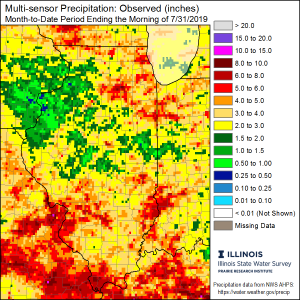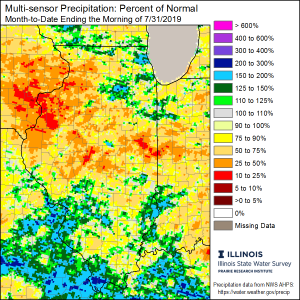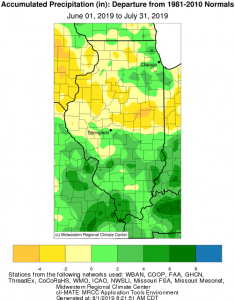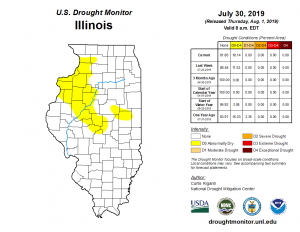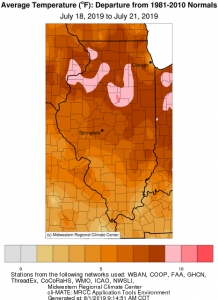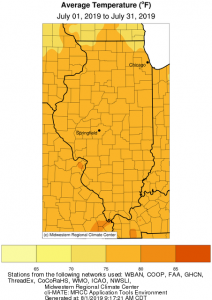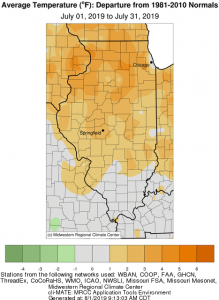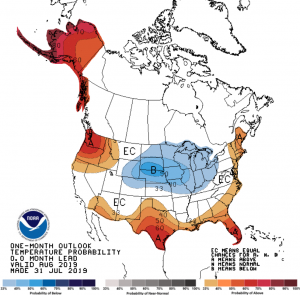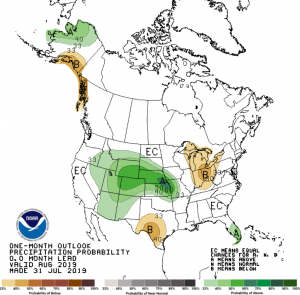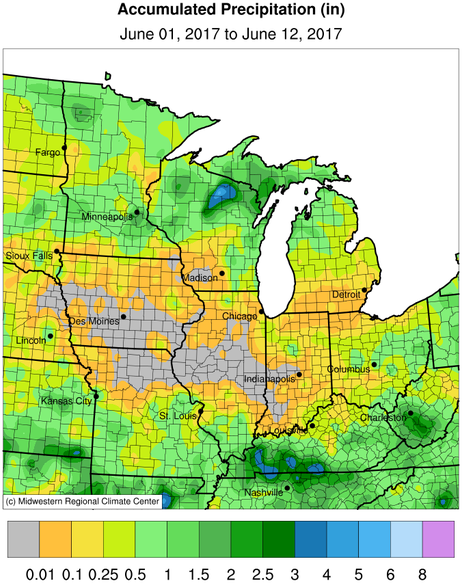August 2019 will be remembered for remarkable differences in monthly precipitation totals across Illinois, as well as the first appearance of drought in the state since September 2018.
It would be inappropriate to summarize August 2019 precipitation across the state using only one adjective. Preliminary data suggest that August was drier than average across much of the state north of I-72 and south of I-64, while much wetter than average conditions prevailed between the two interstates. The preliminary average statewide precipitation was 4.21 inches, which is 0.61 inches below the long-term August average. The preliminary average statewide August temperature was 72.8 degrees, which is 0.7 degrees below the long-term average.
Data are provisional and may change slightly over time
Precipitation & Drought
July 2019 was the first month since November 2018 that ended with below average statewide precipitation. Dryness in the northwest and east-central parts of the state that began in July persisted in August.
Areas in the south-central part of the state, particularly in the western extent of the St. Louis metro east, have received precipitation totals in August between 5 inches and 8 inches above normal, with a station near Patoka (Marion County) reporting the highest August rainfall total of 14.19 inches. Most areas of the state north of I-72 and south of I-64, in contrast, received below normal rainfall in August, in some cases up to 4 inches below normal. The driest area in August covered parts of Ford, Iroquois, and Vermilion counties in east-central Illinois, where precipitation totals were less than 50 percent of their August normal (see maps below).
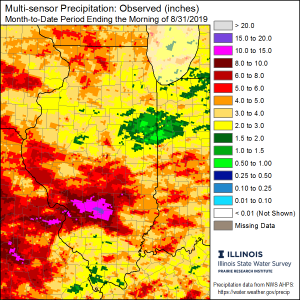
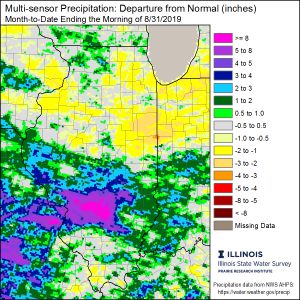
The continued dry conditions from July to August led the U.S. Drought Monitor to identify moderate drought (D1) in northwest and east-central Illinois in their August 13 map. This was the first time the Drought Monitor identified drought in Illinois since September 2018, which represents the largest number of consecutive, drought-free weeks (48) since the Drought Monitor began 20 years ago. The latest Drought Monitor map, from August 29, shows moderate drought persistence in northwest and east-central Illinois (see figure below).

The combination of late planting, due to flooding, and multi-week drought has stressed crops and farmers across central Illinois. Reports from Illinois Farm Bureau CropWatchers discuss corn dropping ears and beans dropping leaves in parts of Champaign County. The recent National Weather Service precipitation forecast calls for between 0.75 inches and 2 inches over the next 7 days for most of the northern half of the state, with little to no precipitation in southern Illinois.
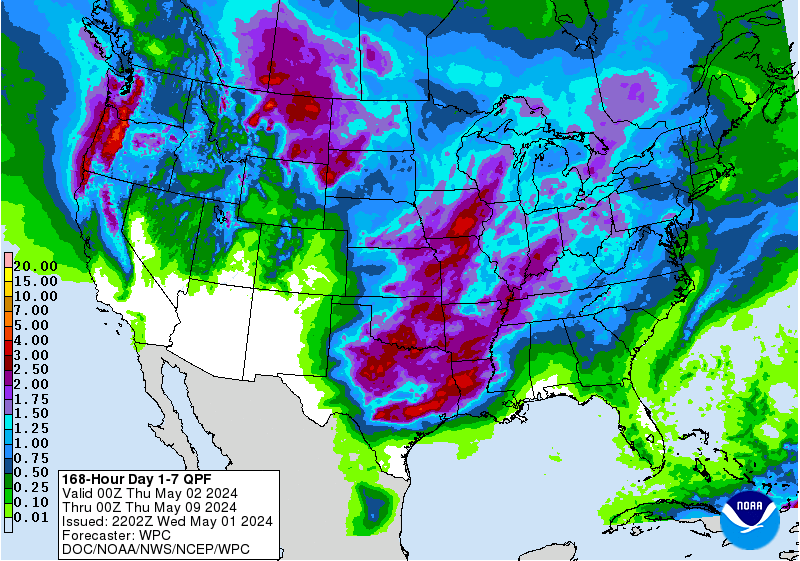
Temperature
Much of the state experienced near normal to slightly below normal temperatures in August. A strong cold front in the early part of the month and the last week of the month resulted in cooler conditions, with minimum temperatures ranging from the high 40s to high 50s across the state. This was particularly the case for the northwest quadrant of Illinois. However, all of the state experienced August temperatures within 2 degrees of the long-term August mean (see maps below). August average temperatures ranged from 79 degrees in Pulaski County to 68 degrees in Jo Davies County. The lowest minimum temperature reported in Illinois in August was 48 degrees in DeKalb County on August 2nd, and the highest maximum temperature reported in Illinois was 98 degrees in Pulaski County on August 20th.
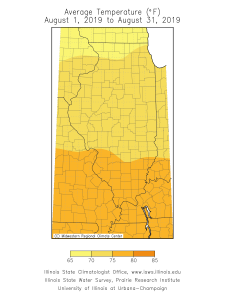
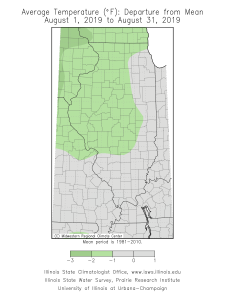
September 2019 Outlook
Looking into September, the monthly outlook from the Climate Prediction Center (CPC) issued on August 31 shows slightly elevated probabilities of below normal temperatures across the northern half of the state, with equal chances of above normal, normal, and below normal temperatures in the southern half.
September precipitation probabilities slightly favor above normal precipitation in the northwest corner of the state, but are equal (above normal, normal, below normal) for the rest of Illinois (see maps below).
September 2019 Temperature Outlook

September 2019 Precipitation Outlook



